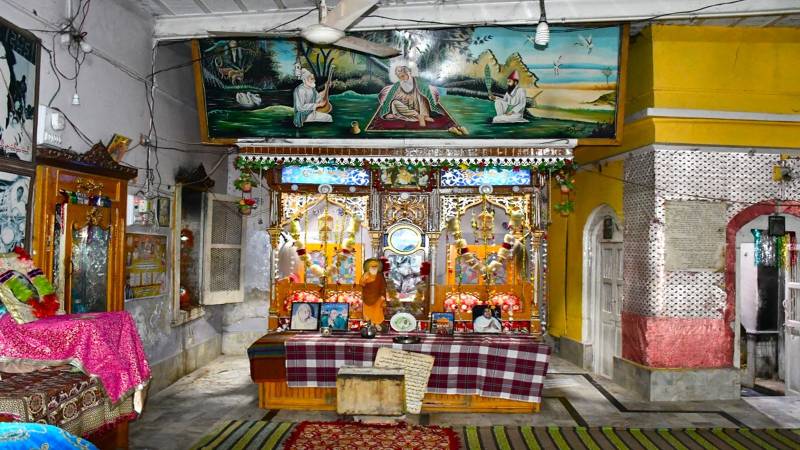
Shikarpur, a city rich in cultural heritage, once had many temples. Today, only a few stand as a testament to its glorious past. Among them, the Budheshwar Mahadev temple, located in Popti Tando in the Sukpul area, is one of the oldest temples in Shikarpur. This temple is believed to have been erected in the last quarter of the eighteenth century or the first quarter of the nineteenth. I have visited this time several times and interviewed local residents and oral historians of Shikarpur about its history.
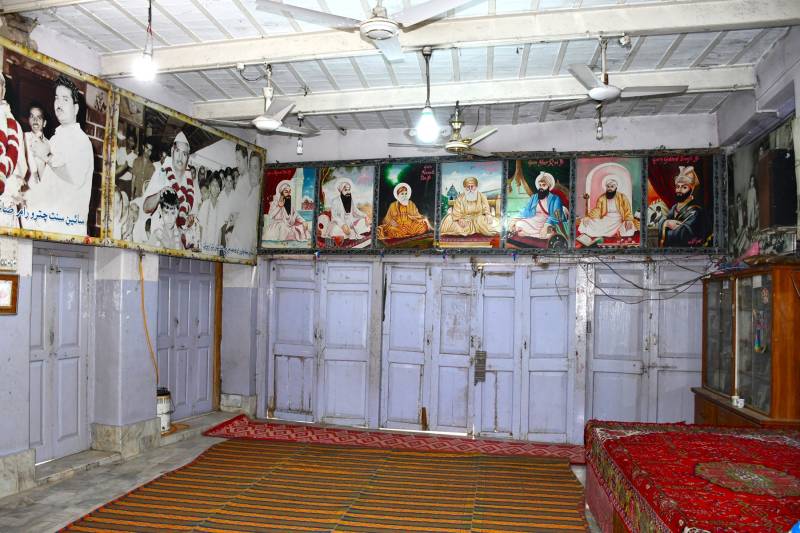
According to Dr Manohar Lal, the son of Sain Sant Chatruram, there were quite a few other temples dedicated to Lord Shiva in the Sukpul locality, including Gangeshwar Mahadev, Budheshwar Mahadev, and others. It is believed that Budheshwar was originally a very small temple. The temple initially housed images of Shiva and Shiva Linga. Later, according to Dada Revachand, a notable of Shikarpur town, Rajaram Khatri, a trader of Shikarpur, renovated it. Mukhi or Seth Khanchand, who was originally from Balochistan’s Bhag Nari, expanded the temple. He was a well-known wool trader whose shops were located in Karachi and Quetta. He made Shikarpur his trading base, from where he expanded his business to other cities and towns in Sindh and Balochistan. Khanchand Makhija also founded Shri Geeta Sangat in the Budheshwar temple. He was a follower of Sain Chatruram, who was the Shivadar of the temple.
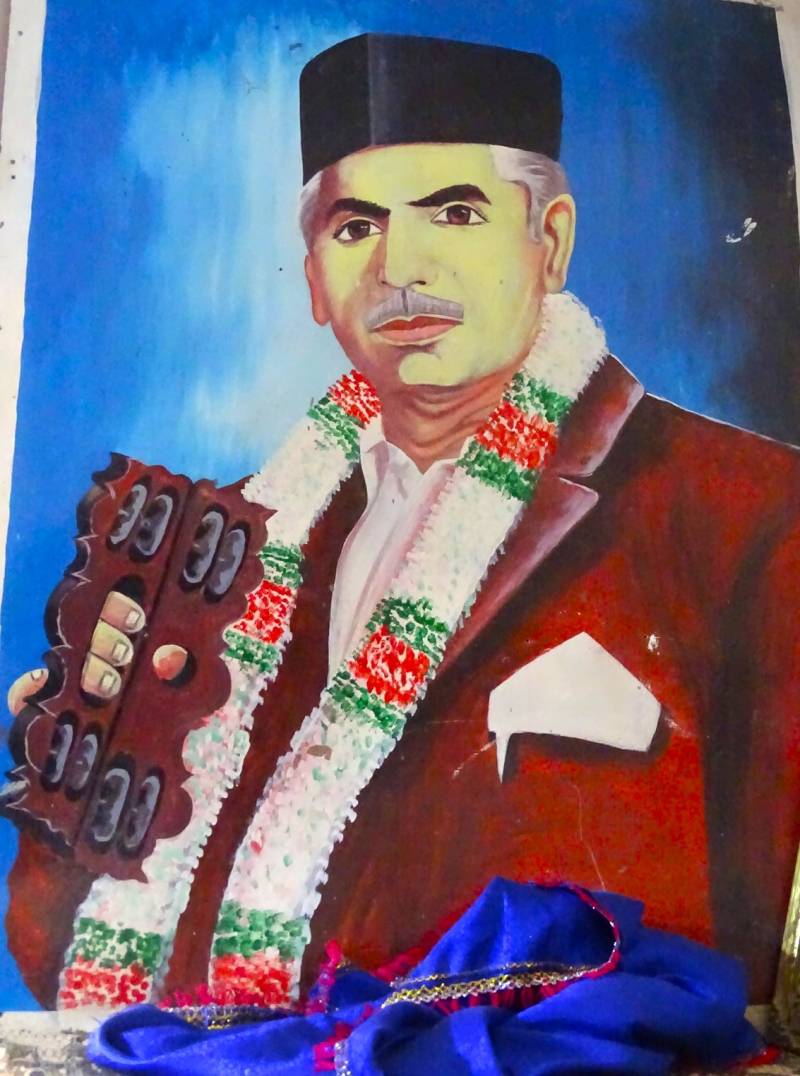
When it was first built, only an image of Shiva and Shiva Linga was placed in the temple, which was known as Shivalo. Later, it was expanded, and images of the other Hindu deities and Guru Granth Sahib were placed in the temple. Dr Manohar Lal shared that many Hindu traders and ordinary people of Shikapur were worshipped in this temple.
The Budheshwar temple attracted a diverse array of worshipers. Notable among them were Kesharam, Tehalram, Khushiram, Seth Khanchand, and Seth Tarachand. The temple's appeal extended to people from all walks of life, including Chhago Mal, Pritam Das, Bhagat Popat Das, Jhamatmal, Himatmal, and Holaram Khatri.
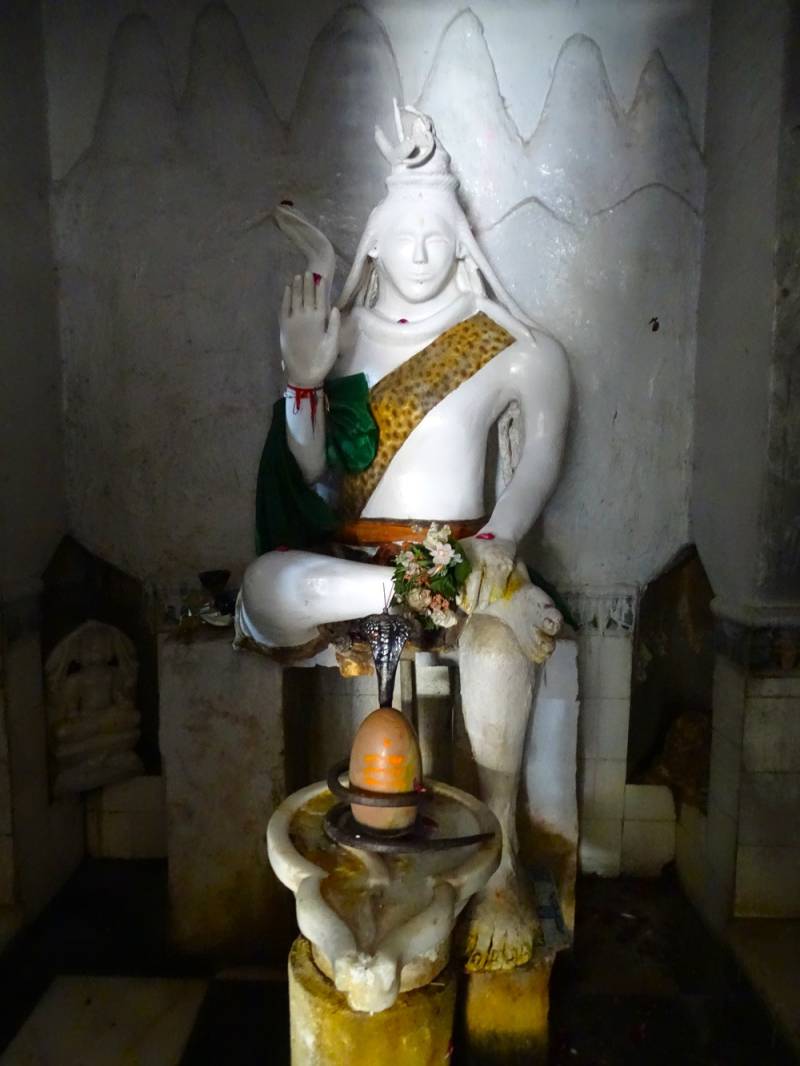
Holaram Khatri was a resident of Jagan village, which had a bazaar before partition where the shops of Hindus were located. Today, neither the bazaar nor the magnificent mansions (Maaris) of Hindus exist in Jagan village. All that has been lost is only preserved in the memories of the descendants of traders of Jagan village.
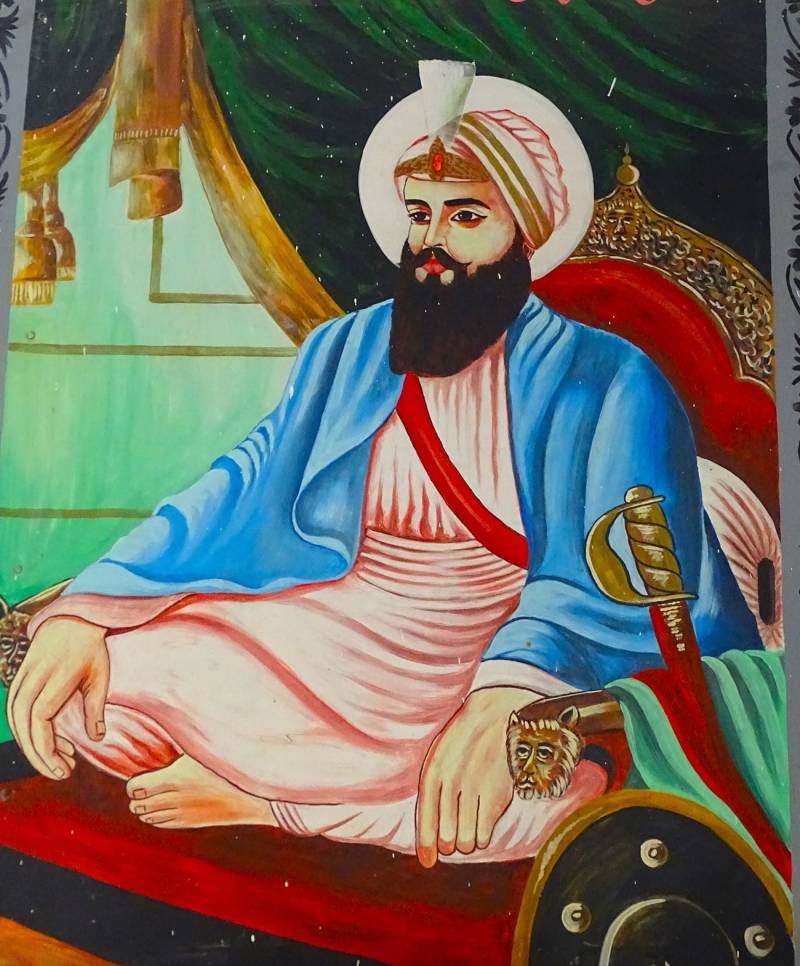
Sain Chatruram, a shivadar of Budheshwar temple, had many disciples. His followers expanded the temple. One prominent person in this context was the merchant Seth Khanchand (d 2008), who played an instrumental role in the expansion of the temple. He was also believed to have established Shri Geeta Sangat and became its president. The other members of Shri Geeta Sangat included Kesharam, Popatram, Parshotam Das Bhatia, and others. Seth Khanchand published about 30 religious books from the platform of Shri Geeta Sangat.
Sain Chatruram’s longest session of Satsang lasted 36 hours non-stop at the Mangal Gir Ashram in Thano Bula Khan. He had a large following in Sindh, Balochistan, and even India
Sain Chatruram was famous for performing Satsang at Budheshwar temple and other temples in Sindh and Balochistan. Sain Chatruram’s son, Dr Manohar Lal, told me that Sain Chatruram was also shivadar of Balakram Ji Marhi near Lakhidar, where he also used to perform Satsang. Later, when he became Shivadar (caretaker) of Budheshwar temple, he also started Satsang at this temple. Sain Chatruram also performed Satsang in Samana Darbar in Jacobabad’s Thull town. He also performed satsang at Mata Ji Marhi in Sukpul and Shankar Bharti ashram in Shikarpur. According to Dr Manohar Lal, Sain Chatruram’s longest session of Satsang lasted 36 hours non-stop at the Mangal Gir Ashram in Thano Bula Khan. He had a large following in Sindh, Balochistan, and even India. Apart from Sindh, he also performed Satsang in many temples and darbars in Balochistan. In India, he performed satsang in Bhopal, Indore, Mumbai and many other places.
He was the first to celebrate Bhagat Kanwar Ram's anniversary at the Budheshwar temple, which continued for nine days in the Budheshwar temple. Bhagat Kanwar Ram was a famous Sufi singer and poet of Sindh. He was a follower of Satram Das Sahib of Raharki.
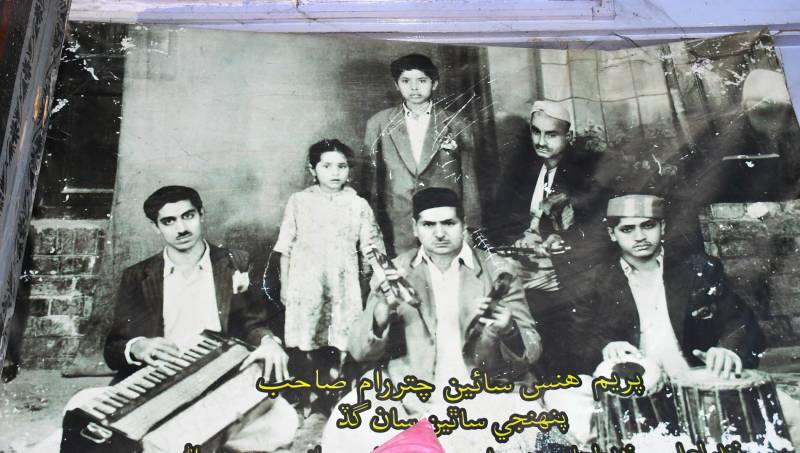
Sain Chatruram died in 1967, leaving behind five sons: Professor Jethanand, Dr Manohar Lal, Sain Balram, Ashok Kumar, and Amar Lal. His Devri or Samadhi is located in the Budheshwar temple. The Samadhi contains pictures of Sai Baba, Rama and Seeta, Bhagat Kanwar Ram and Sain Chatruram. Adjacent to the Samadhi of Sain Chatruram are two marble images of Lord Vishnu.
The main Satsang hall of the temple contains a Singhasan (throne), where the Guru Granth Sahib is placed. A large picture shows Guru Nanak with Bhai Bala and Bhai Mardana on wooden Singhasan. To the right of the Singhasan is located a temple of Shiva. In this temple are found the image of Shiva and Shiva linga. The main Satsang hall also contains images of Vishnu and Lakshmi. It also has a large wooden stage platform where the Satsang group members sit and perform Satsang. It is an old wooden stage platform where Sain Charuram and his satsang group members used to do Satsang. The walls of the Satsang hall are decorated with pictures of Hindu saints and ascetics. There are also pictures of Sikh Gurus on the hall’s wall. Sain Sant Chatruram’s pictures are also found on the hall’s wall, showing him visiting his followers in India. In one of the pictures, Sain Sant Chatruram is shown performing Satsang with his group members. In one of the pictures, he is shown with his Satsang group members, including Nand Lal, Ropomal, and Baldev. His daughter Rani is also shown in the picture. One can also identify the musical instruments that are shown in the picture, with Sain Chatruram playing wooden clappers (khenjri) and others, such as dholak and harmonium. Sital Das, son of Bakhsomal, was an accomplished dholak player and a Sain Chatruram Satsang group member. The mother of Sital Das, Jivat Bai, was also a devout follower of Sain Chatruram.
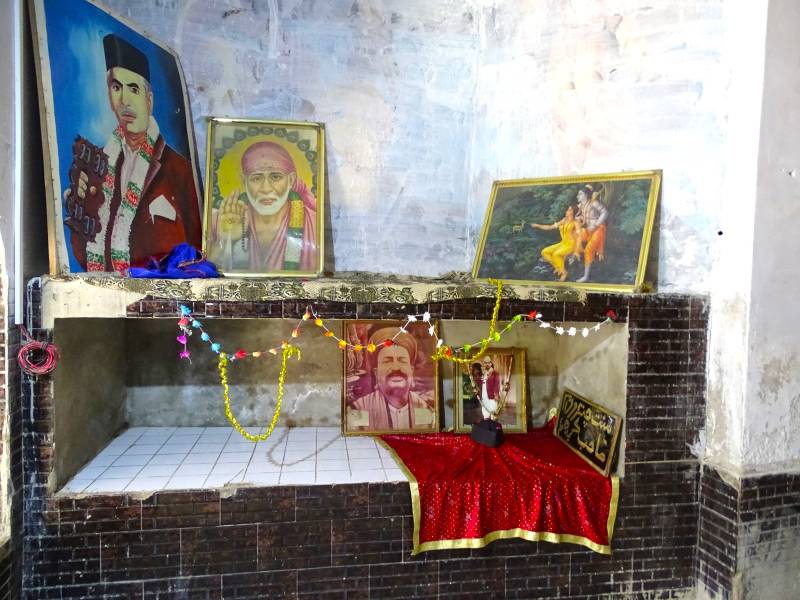
Dada Revachand told me that there used to be a Parshotam library in the Budheshwar temple, but it no longer exists. There were other halls where dances and dramas were organised. Some actors who participated in these dramas were Kudan Sonaro, Lalu, Shatiapal, Balram, and others. The dramas were inspired by religious literature, and various plays were performed to honour Hindu deities. In one of the halls, pilgrims used to stay. Jyot of Lal Sain or Jhuelal is also found in one of the temple rooms.
Many Hindu festivals were celebrated in the temple, including the Dussehra festival, which attracted worshippers from nearby villages and towns. Wedding ceremonies and funeral rites are both conducted in the temple. Like many other Hindu temples and darbars in Shikarpur, this temple has also undergone renovations and has lost its originality.

